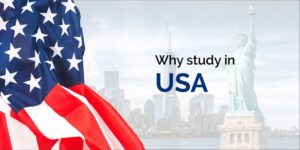Studying in the United States has always been a dream for countless individuals worldwide. The U.S. educational experience offers not only academic excellence but also diverse cultural exposure. However, to make this dream a reality, it’s essential to understand the different student visas available. Here, we delve into three key student visas: F-1, J-1, and M-1, each designed to cater to specific educational pursuits. We’ll also provide insights from Mentor Universe and highlight the experiences of Somesh and Romesh Khandelwal, who have been guiding students on their educational journeys.
F-1 Visa: Your Path to Academic Excellence
The F-1 visa is your gateway to pursuing academic excellence in the United States. Here’s what you need to know:
Duration: Unleashing Your Academic Potential
The F-1 visa allows you to immerse yourself in the United States for the entire duration of your academic program. Notably, it includes a grace period that permits you to arrive up to 30 days before the start of your program and remain for up to 60 days after completing your studies.
Employment Opportunities: Building Your Career Alongside Education
F-1 visa holders are eligible for a myriad of employment opportunities in the United States, including on-campus employment, optional practical training (OPT), and curricular practical training (CPT). These opportunities can provide invaluable work experience while you pursue your education.
Bringing Loved Ones: Share Your Journey
F-1 visa holders can also bring their dependents, including a spouse and unmarried children under 21, to the United States on an F-2 visa. While F-2 visa holders cannot work, they are allowed to accompany you throughout your educational journey.
J-1 Visa: Promoting Cultural Exchange and Education
The J-1 visa, also known as the exchange visitor visa, is tailored for individuals participating in exchange programs that promote cultural exchange, educational enrichment, and international cooperation. Here are the key details:
Eligibility: Embarking on a Cultural Odyssey
The J-1 visa is typically granted to individuals participating in exchange programs sponsored by accredited institutions, organizations, or government entities. These programs can encompass study programs, research initiatives, internships, and more.
Duration: Embracing Global Education
The duration of a J-1 visa can vary depending on the specific exchange program. It can range from a few weeks to several years, with an upper limit on the duration of stay, which varies by category.
Employment Prospects: Balancing Work and Learning
J-1 visa holders are generally allowed to work on-campus and may be eligible for academic training in their field of study. Academic training aligns with the practical training opportunities available to F-1 visa holders.
Home Country Requirement: A Global Perspective
Some J-1 visa holders may be subject to a two-year home country residence requirement, also known as the “212(e) requirement.” This means that after completing their course, they need to return to their home country for at least two years before being eligible for certain U.S. visas or permanent residency. However, not all J-1 visa holders are subject to this requirement.
M-1 Visa: Focusing on Vocational and Non-Academic Programs
The M-1 visa is tailored for students planning to enroll in vocational or non-academic courses in the United States. Here’s what you need to know about this visa category:
Eligibility: Crafting a Practical Future
To qualify for an M-1 visa, you must be accepted by a U.S. vocational school or institution authorized by the U.S. government to enroll international students. The program you choose has to be primarily vocational or non-academic in nature.
Duration: A Journey of Skill Development
The M-1 visa allows you to stay in the United States for the duration of your vocational program. Similar to the F-1 visa, it includes a grace period that permits you to arrive up to 30 days before the start of your course and stay up to 30 days after completion.
Employment Opportunities: Building Practical Skills
Unlike F-1 visa holders, M-1 visa holders have limited employment options. While on-campus employment may be permitted in some cases, off-campus work is generally not allowed.
Bringing Loved Ones: A Journey Shared
M-1 visa holders can bring their dependents, including a spouse and unmarried children under 21, to the United States on an M-2 visa. However, M-2 visa holders are not allowed to work or study in the U.S.
Mentor Universe: Your Guide to Educational Success
As you navigate the complexities of studying in the USA and choosing the right visa, Mentor Universe stands as your trusted guide. Mentor Universe – USA Student Visa Consultant, founded by Somesh and Romesh Khandelwal, is a pioneering and innovative study abroad and test preparation company established in 2004. They have been helping students achieve their dreams of studying in the United States and other developed countries.
With their years of experience and deep knowledge of the education system, Somesh and Romesh Khandelwal provide invaluable insights and personalized guidance to students and their parents. Unlock your dreams and explore the world of education with confidence and the right visa.





